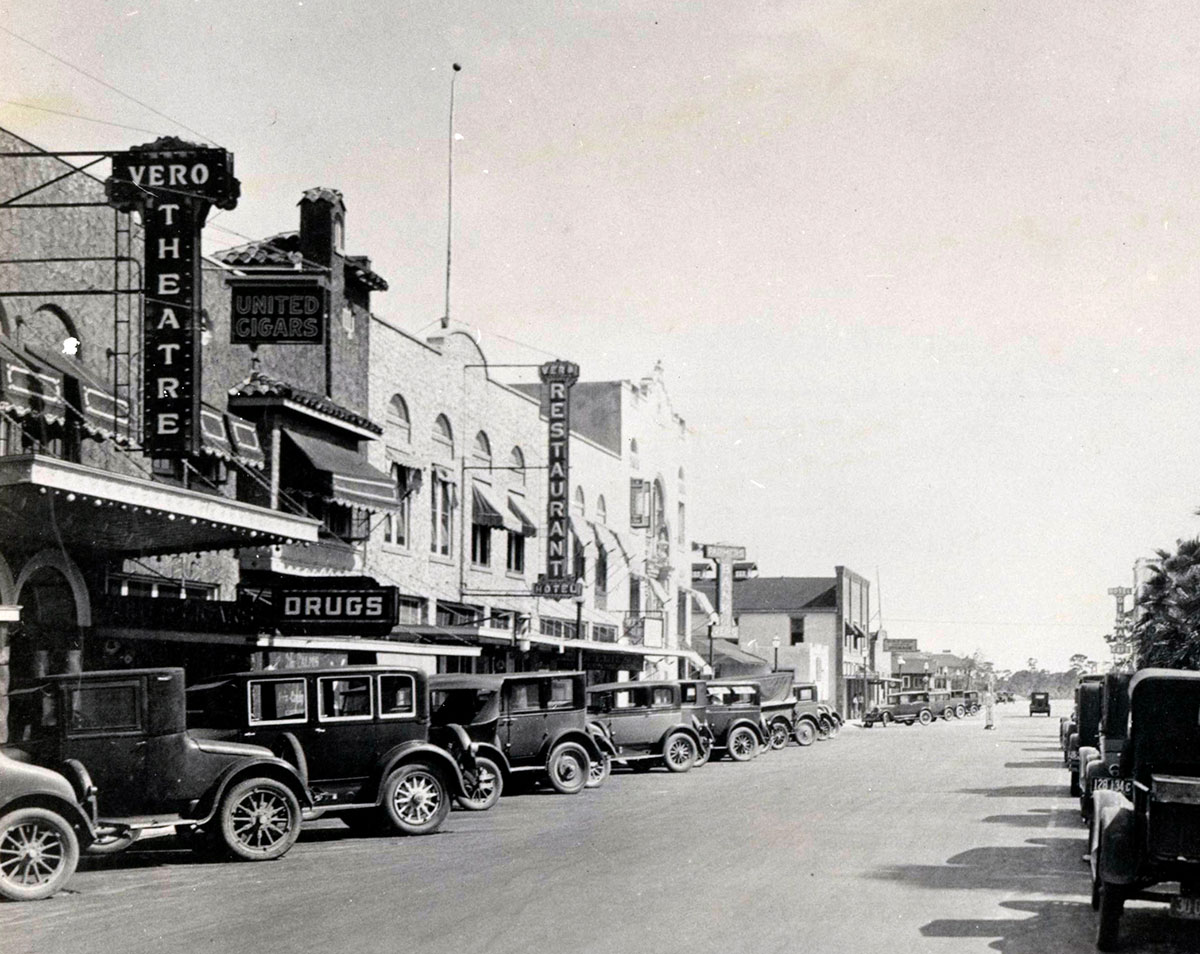A region divided

The Vero Theatre opened October 1924 on 14th Avenue in Vero Beach and was the center of controversy when the sheriff raided the theater four times from February to March 1925 for breaking Sunday “blue laws.” INDIAN RIVER COUNTY MAIN LIBRARY ARCHIVES, INDIAN RIVER COUNTY HISTORICAL SOCIETY
The revolt of citizens in Vero Beach helped create Indian River and Martin counties in a break from St. Lucie
BY PAMELA J. COOPER
After much debate and quite a bit of rancor among citizens and politicians alike, Indian River County was born in 1925 through state legislation that carved both Indian River to the north and Martin to the south out of St. Lucie County, leaving three separate counties in the place of one. Local legend has it that the forced Sunday closing of the four-month-old Vero Theatre (later the Florida Theatre and now Theatre Plaza) on 14th Avenue in 1925 was the reason many Vero Beach citizens and officials demanded the creation of a new county. However, complex issues involving state law, moral codes and alleged corruption played major roles in the separation.
LAW AND DISORDER
Sheriff James R. Merritt of St. Lucie County was a key figure in raids made at the Vero Theatre because it illegally remained open on Sundays. The sheriff from 1922 to 1929, he was known for his tough law-and-order pursuit of people in violation of the law. Arrests for possession or sale of alcohol were common. A 1923 government bulletin praised St. Lucie County for taking “quick action against law violators,” according to the Vero Press. A month after the bulletin was published, the sheriff killed an ex-prizefighter known as “The Big Swede” for allegedly drawing his gun. In a dying statement, the fighter declared he had no gun, but Merritt was cleared of his death.
A year later, the sheriff and his men set up an ambush at the Sebastian bridge to catch the John Ashley Gang, well-known for its many run-ins with the law, including the illegal sale of liquor. All four members were shot dead at the scene and carried to Fort Pierce to be put on display.
